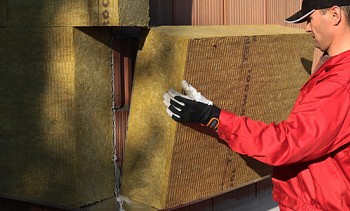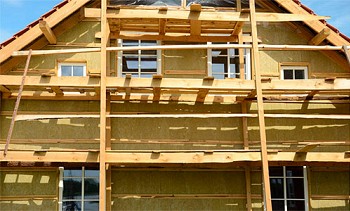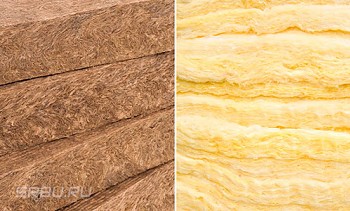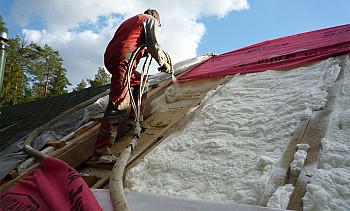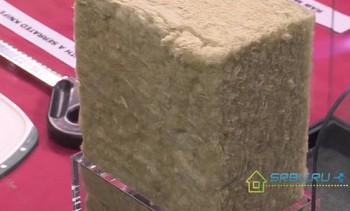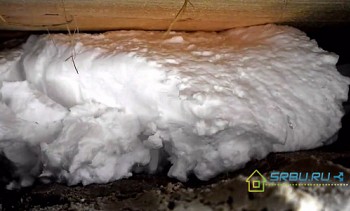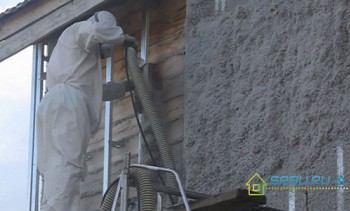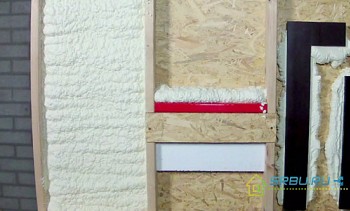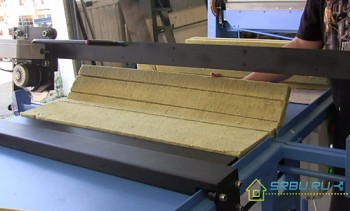Insulation for the walls of a frame house - which is better to use
Everyone who is faced with frame construction at some point are forced to think about what insulation is best for a frame house. To make the right decision, you need to know the properties of the main heat-insulating materials offered by the modern market. In addition, the rules on which their choice is based should be taken into account. After reading this article, you can consciously and competently choose the most suitable insulation material for the insulation of the walls of a frame house.
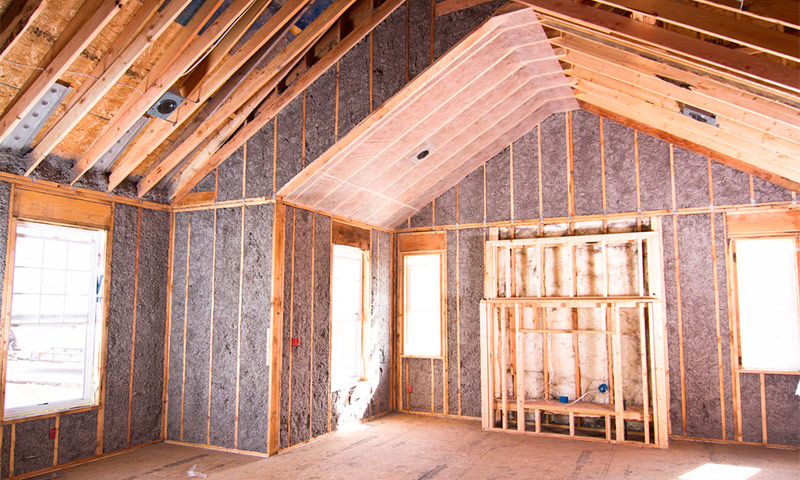
Content:
What properties should a heater for a frame house have?
Insulators used to insulate the walls of a frame house should have the following properties:
- low thermal conductivity;
- fire safety;
- low water absorption;
- lack of shrinkage;
- environmental friendliness.
Thermal conductivity
The ability of a material to transfer heat displays the coefficient of thermal conductivity. The lower its value, the less heat passes through this material. At the same time, the room does not cool down so quickly in winter, and heats up more slowly in summer. This allows for savings in cooling and heating. For this reason, choosing a heater, be sure to take into account the value of the coefficient of thermal conductivity of the material during operation in specific conditions.
Water absorption
The next important indicator that affects the ability of the insulation to retain heat is its water absorption. It is the ratio of the amount of water absorbed by the insulation to the mass of the insulation itself. This characteristic demonstrates the ability in case of direct contact with water to absorb and retain moisture in the pores.
Due to the fact that wet material conducts heat well, the smaller this value will be, the better. This is due to the fact that when wet, the air pores of the insulation are filled with water, which has a higher thermal conductivity than air. In addition, too wet material can simply freeze, turning into ice and completely lose its functions.
Fire safety
Fire safety of materials means the ability to withstand high temperatures without breaking the structure and ignition. This parameter is regulated using GOST 30244, GOST 30402 and SNiP 21-01-97, which subdivide them into combustibility groups from G1 to G4, while completely non-combustible substances are designated NG. For frame residential buildings, heaters belonging to the NG group are most preferred.
Insulation shrinkage
When choosing a heat insulator for a frame building, it is necessary to take into account such an indicator as the ability to shrink. This value should be minimal, otherwise during operation in the places of installation of the insulation material subsidence will appear, which will lead to the occurrence of cold bridges and an increase in heat loss.
Environmental friendliness
The basis of the walls of the frame house is insulation. Since insulating material will surround you in the frame house everywhere, you need to be sure that this is a really high-quality insulation and it does not emit harmful substances.
What materials are suitable for warming a frame house
The market offers a huge assortment of heaters of various types and types. The frame house is a building made of wood and materials made of wood. In the case of wooden buildings, the vapor permeability of the insulation is of decisive importance, which should not be lower than that of the type of wood from which the frame is made.
In most cases, coniferous species are used for the construction of houses, with a vapor permeability value of 0.32 Mg / (m x h x Pa).
To clearly substantiate which insulation for the walls of a frame house is better, consider the vapor permeability of the most popular heat-insulating materials.
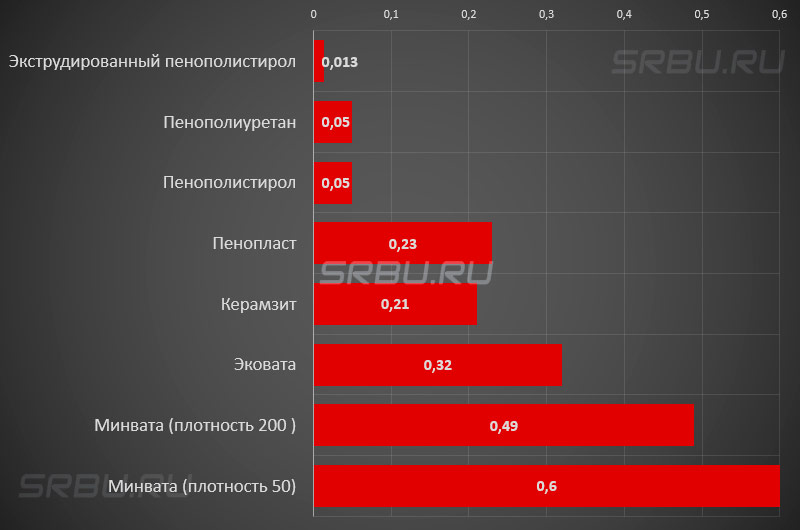
Obviously, the 5 materials shown at the beginning of the graph are not suitable for warming frame construction due to the low vapor permeability. Their use causes the sealing of insulated surfaces or structures, and buoyancy perfectly illustrates the lack of ability to pass steam.
It is important! Under no circumstances is it recommended to insulate the frame house with polystyrene and its derivatives.
As you can see, mineral wool has the highest vapor permeability, and this indicator for ecowool is the same as for wood. Therefore, both of these materials can be used for insulation of houses with wooden frames.
Mineral wool insulation
Fibrous insulation material known to everyone as mineral wool today makes up about 70% of all thermal insulation used. Mineral wool insulation is made from various raw materials and, depending on this, have certain properties.
Depending on the material from which mineral wool is made, the following types are distinguished:
- stone;
- basalt;
- glass;
- slag.
Minvata is environmentally friendly, light in weight, has the required degree of vapor permeability and is resistant to pests. A valuable property for frame houses is its fire safety.
The disadvantage of mineral wool, which must be considered when choosing, is hygroscopicity. Despite this, it is possible to use it when warming frame buildings, but with the mandatory use of vapor barrier and waterproofing membranes, we will talk about this a little later.
1. Basalt (stone) cotton wool.
The raw materials for the production of stone-wool insulation are various rocks - basalt, basalite, diarite, porphyrite. Since basalt is the leader in this list, all stone-cotton material is often called basalt wool, which is not entirely true. Such a name should be given only to those varieties that are produced directly from basalt itself, but they have a different field of application. They are used not for insulation of walls and residential structures, but for insulation of pipelines and technological equipment.
Stone wool is a completely non-combustible material with high thermal insulation qualities, characterized by durability. The total duration of his service approaches 50 years, while he is able to maintain his valuable properties unchanged throughout this time.
In addition, this insulation has:
- chemical resistance;
- non-hygroscopic;
- biological resistance;
- resistance to deformation at high temperatures;
- environmental friendliness.
Stoneish (basalt) heaters are distinguished by negligible shrinkage. Their geometric dimensions are able to remain unchanged throughout the entire period of operation of the building. As a result of this, cold bridges do not appear at the joints of insulation boards. Materials of this group can withstand temperatures up to 1000 ° C, without melting and without deformation.
Such heaters have pronounced water-repellent properties due to hydrophobic additives. As a result of this, moisture entering their surface does not readily penetrate inside, and that part of it that the air contains in the form of fumes does not linger in the thickness of the insulation, but can freely pass through them.
Stone wool is made in the form of slabs. In the case of frame buildings, heat-insulating plates made of materials with a density of 35-50 kg \ m³ are considered optimal. The width of the plates should be 1-3 cm greater than the distance between the racks, which allows you to install the plates tightly and without gaps.
A very technological solution is the use of Izolayt and Izolayt-L heat-insulating plates made by the leader in the production of Izorok basalt thermal insulation. Among other well-known manufacturers of similar materials present on the Russian markets, it should be noted ROCKWALL, PAROC, Nobasil.
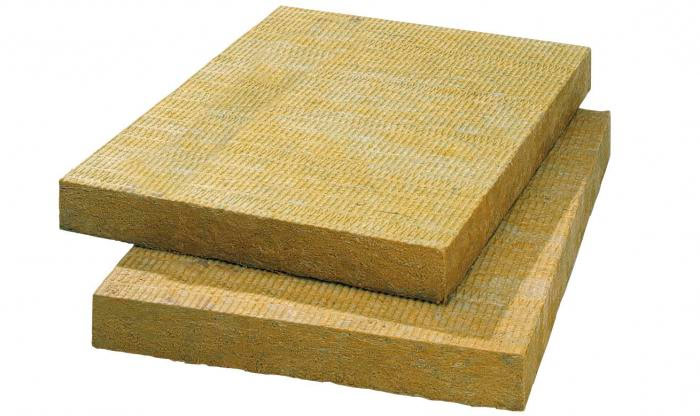
2. Glass wool (insulation based on fiberglass).
Glass wool has many common properties with basalt wool, but at the same time, they have serious differences. For its production, raw materials used in the manufacture of glass, as well as waste resulting from this, are used. It does not look like plates, but rolls, which consist of separate strips of various sizes, called mats. Their approximate dimensions are 10 m long, 1, 2 m wide, and 100 mm thick.
When thermal insulation of frame structures, it is recommended to use a heater with a density of 15-20 kg \ m³. For maximum effect, each material should be used only for its intended purpose. Therefore, it is not allowed to purchase a heater of lower density, which has a lower cost, in order to save. It can only be used on horizontal surfaces, such as floors.
Before installation, the glass wool is cut into strips of the required size, which should be 15-25 mm greater than the distance between the racks, which allows it to be placed “in the spacer”. The material holds well on the frame due to its light weight and the presence of long springy fibers.
Glass wool is distinguished by the lack of environmental friendliness, due to which stone wool is often abandoned in favor of stone wool. Work with it only in a respirator and gloves. Certificates claim that with full compliance with all the requirements of the technology, which is so rare in practice, it does not pose a threat to health.
In addition, glass wool is capable of a certain degree of shrinkage. As a result, over time, voids appear in the frame, creating bridges of cold. The disadvantages include increased water absorption of the material, actually reaching 12-15%.
In modern construction, glass wool of such brands as ISOVER, Knauf Insulation, URSA is often used.
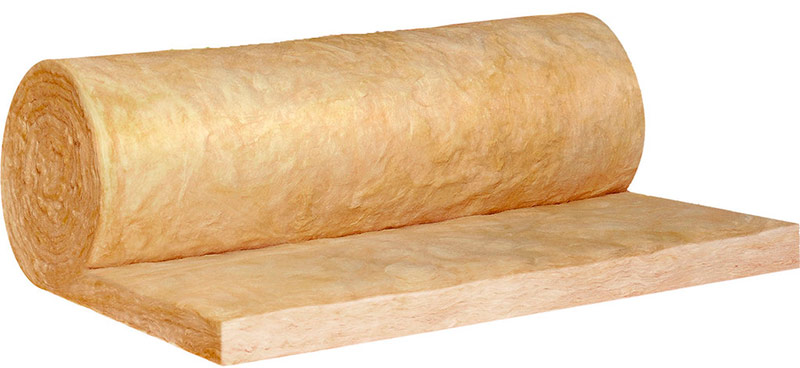
3. Slag heaters.
Slag heaters are currently used extremely rarely. The raw materials for their production are blast furnace slag and metallurgical waste. Although they have low cost and not too high thermal conductivity, they are practically not used where they want to achieve environmental friendliness and durability of the structure.
This is due to the fact that heaters of this type are very brittle and brittle, their shape after mechanical stresses is not restored. Since the manufacturing technology does not allow adding hydrophobic substances to their composition, they have high water absorption. In the production of slag insulation use phenyl-formaldehyde components that are harmful to humans.
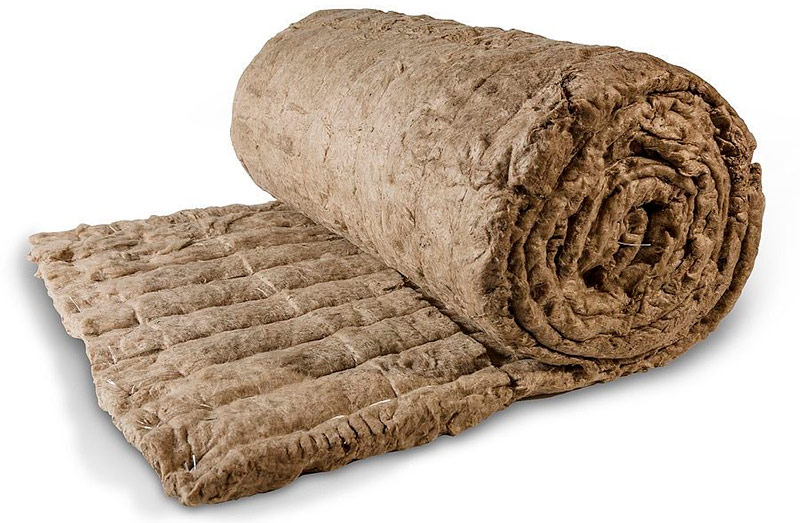
Ecowool
This is a modern insulation created on the basis of cellulose, which is well suited for thermal insulation of a frame house. It differs from mineral wool in appearance and installation methods. This material is not combustible; it does not emit toxic substances when ignited. It has high sound insulation, 2 times higher than that of mineral wool.
It is also widely used for insulation of offices, industrial and residential premises, trade pavilions, warehouses. It is advisable to use ecowool in places with high humidity and the risk of condensation. The only drawback is the high cost of the material and the need for special equipment for installation.
For the production of ecowool as raw materials are used:
- cardboard and paper industry waste;
- defects and scraps remaining after printing newspapers and magazines;
- various waste paper - old books, magazines, newspapers.
The latter type of raw material belongs to the second grade, since it is too heterogeneous and prone to contamination.The volume of the obtained insulation material consists of 80% cellulose fibers, 12% of boric acid, which protects it from fungi and bacteria, 8% is sodium tetraborate, which is a flame retardant. This component not only increases the fire resistance of the material, but also enhances the insecticidal properties. When moistened, the ecowool fibers become sticky, which is due to the lignin included in their composition.
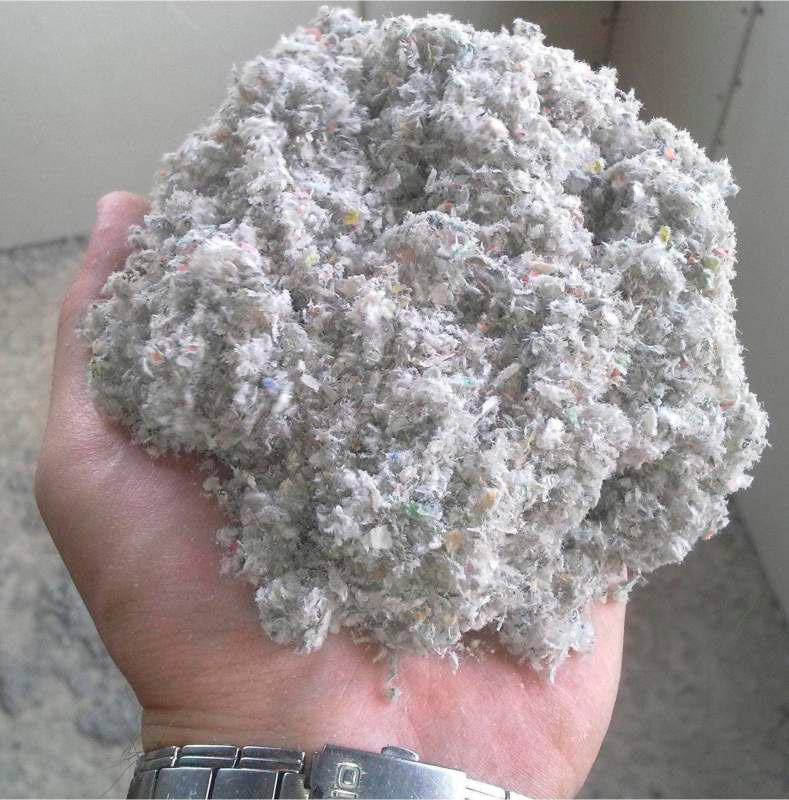
There are 3 ways to warm a building with this material:
- dry;
- wet;
- glue.
To blow dry cotton wool using special equipment. Ecowool is supplied through a special hose, the operator can direct the hose into various cavities and fill them with ecowool. Using the dry method, the attics, floors, internal surfaces of roofs and floors are insulated.
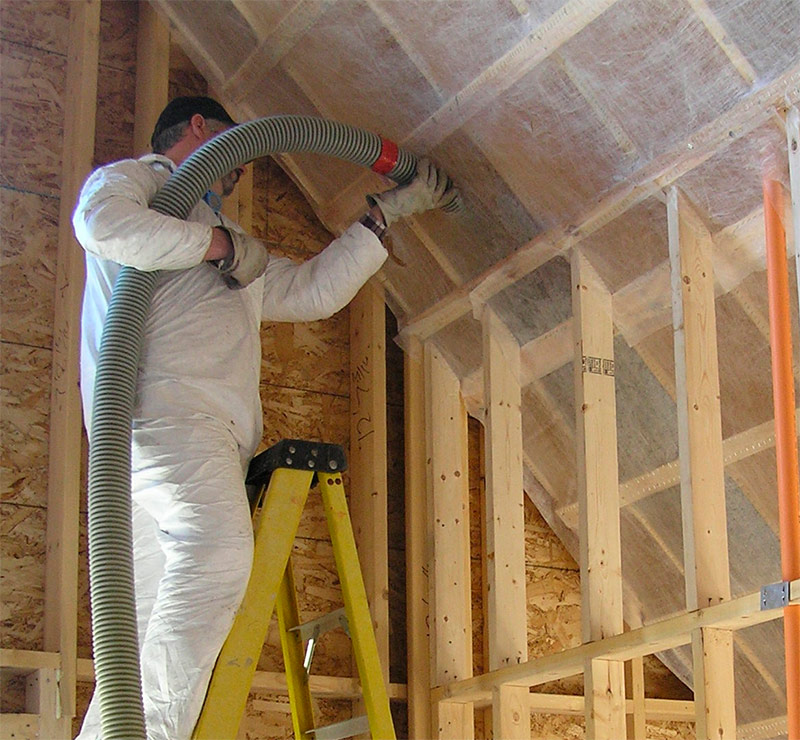
Dry blowing ecowool.
The wet method is convenient to use when the insulated surface is subsequently sheathed. In this case, water is added to the composition and the resulting mass is sprayed onto the wall surface. When the resulting mixture dries, a dense heat-protective layer is formed. The advantage of the wet method is the absence of shrinkage and a large amount of dust during cleaning.
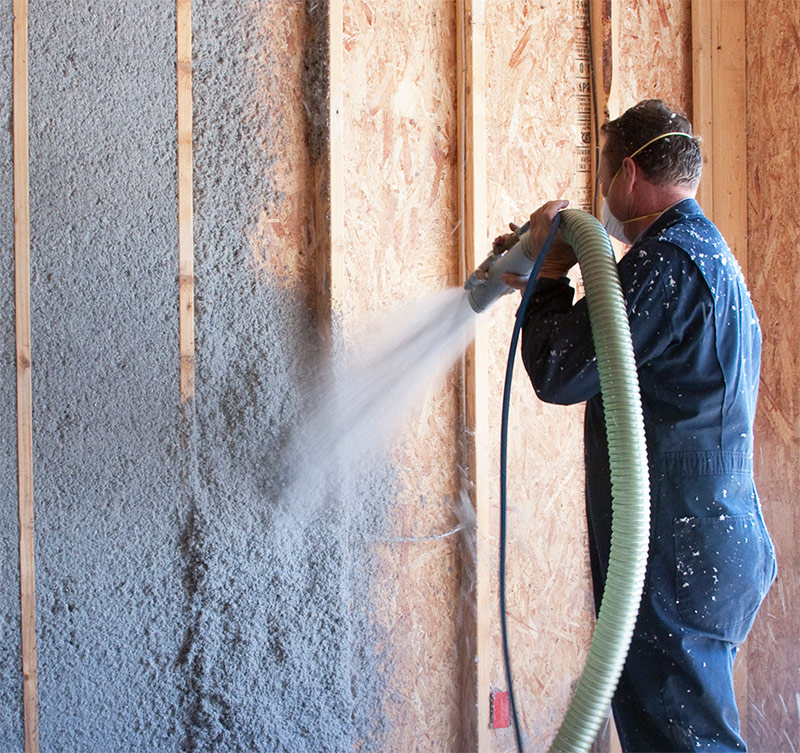
Wet ecowool application.
The glue method is resorted to when insulating structures made of metal or reinforced concrete, which, for example, include ceilings and walls of hangars. Due to the high adhesion of the adhesive composition, its layer adheres perfectly to the protected surface. Due to the strength and hygroscopicity of the coating, additional outer skin is not required.
Stone (basalt) cotton wool or ecowool, which is better for warming a frame house?
Both of the materials described above are good in their own way. When choosing between them, one should take into account not only the properties of each of them, but also the features of the insulated structure, as well as the degree of complexity of the installation of the insulation. Compared with existing technologies for laying mineral wool, ecowool insulation is considered more laborious. Additional costs here occur in the following cases:
- when thermal insulation of an inclined roof using dry blowing;
- when warming walls with dry blowing;
- when using a wet-glue method for thermal insulation of walls.
When warming an inclined roof between the rafters in the lower part of the slopes you will need to install "plugs" that will not allow the ecowool to go beyond the boundaries of the thermal circuit. At the bottom of the rafters, under vapor barrier, you will need to create a horizontal supporting crate.
When insulating walls by dry blowing after completion of the work, restoration of the technological holes through which material blowing took place is required. But this will only be necessary if the frame inside is sheathed with plate material. In those cases when the frame was covered from the inside with only a membrane, the manufacture of a supporting crate is necessary.
The use of wet-glue method before further covering from the inside, it takes time and control over drying.
When using ecowool, it cannot be backfilled manually, since there is a high probability of violation of the density of the backfill. As a result, there will be insufficient thermal insulation and shrinkage of the material. When insulating ecowool it is important to choose a good company that has modern equipment for blowing ecowool.
Therefore, when thinking about what kind of insulation it is better to insulate a frame house, remember:
If it is possible to entrust the installation of ecowool to a reliable contractor, make a choice between ecowool and stone wool. If there is no confidence in the high quality of the work of installers, it is better to give preference to basalt cotton wool. Ecowool is a relatively new material, relative to mineral wool, which has been used for a long time, and the insulation technology has long been run-in.
Why vapor barrier and windproof insulation are important
Vapor barrier is necessary to protect the mineral wool insulation layer from moisture and vapors coming from inside the building.The effectiveness of the entire thermal insulation system depends on the quality of the device and the implementation of vapor barrier. It is advisable to entrust its implementation to professionals or, at least, to accurately follow all the recommendations of manufacturers of steam and heat-insulating materials.
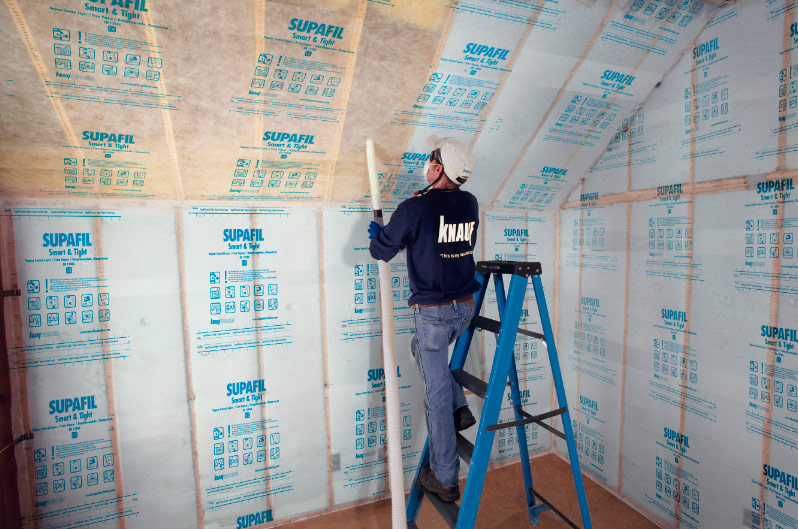
Mineral wool insulation needs protection from the outside. A thick woolen sweater can not always protect its owner from the wind. But it is worth putting on top of it a windbreaker from a thin, but not blown fabric, it immediately becomes warm and cozy.
Similarly, the insulation layer will reliably retain heat only when it is protected by a reliable hydro-windproof membrane fixed to the outside. At the same time, wind protection not only helps to save heat inside the building, but also prevents the weathering of the fibers of the insulating material, and also protects it from atmospheric moisture.
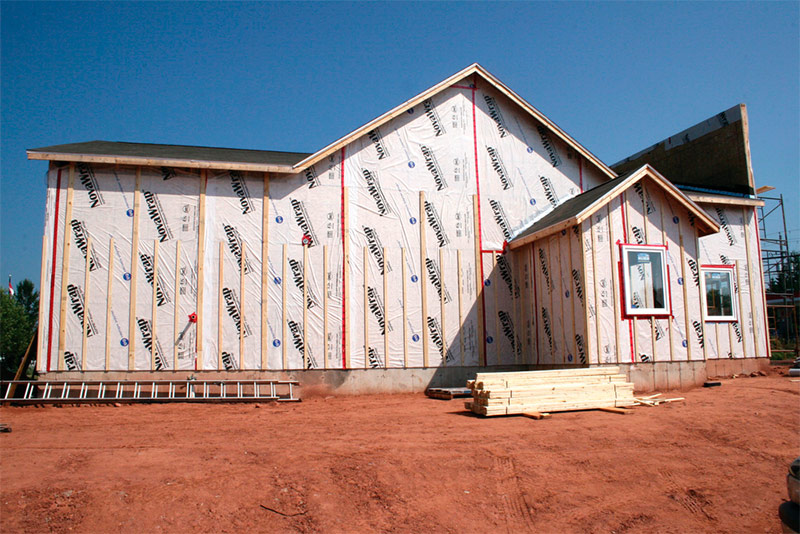
The material used to protect against wind should not only trap moisture and cold air entering from the outside, but also freely pass water vapor from the inside of the insulation. In other words, it must be vapor permeable and airtight at the same time. After all, moisture, getting inside the insulation, significantly reduces its thermal insulation characteristics, and when negative temperatures appear outside, the insulation also begins to freeze.
In order to protect against these factors, multilayer modern hydro- and windproof membranes are used. They create the most favorable conditions not only for the functioning of the insulation, but also for the people living in the building. In this case, it is very important to comply with the technology of their installation. It is unacceptable to use polyethylene or any other film that contributes to the emergence of the "thermos effect" inside the building. In addition, their use in addition to unprofessional installation can lead to the loss of mineral wool insulation for all dimensions of the structure.

